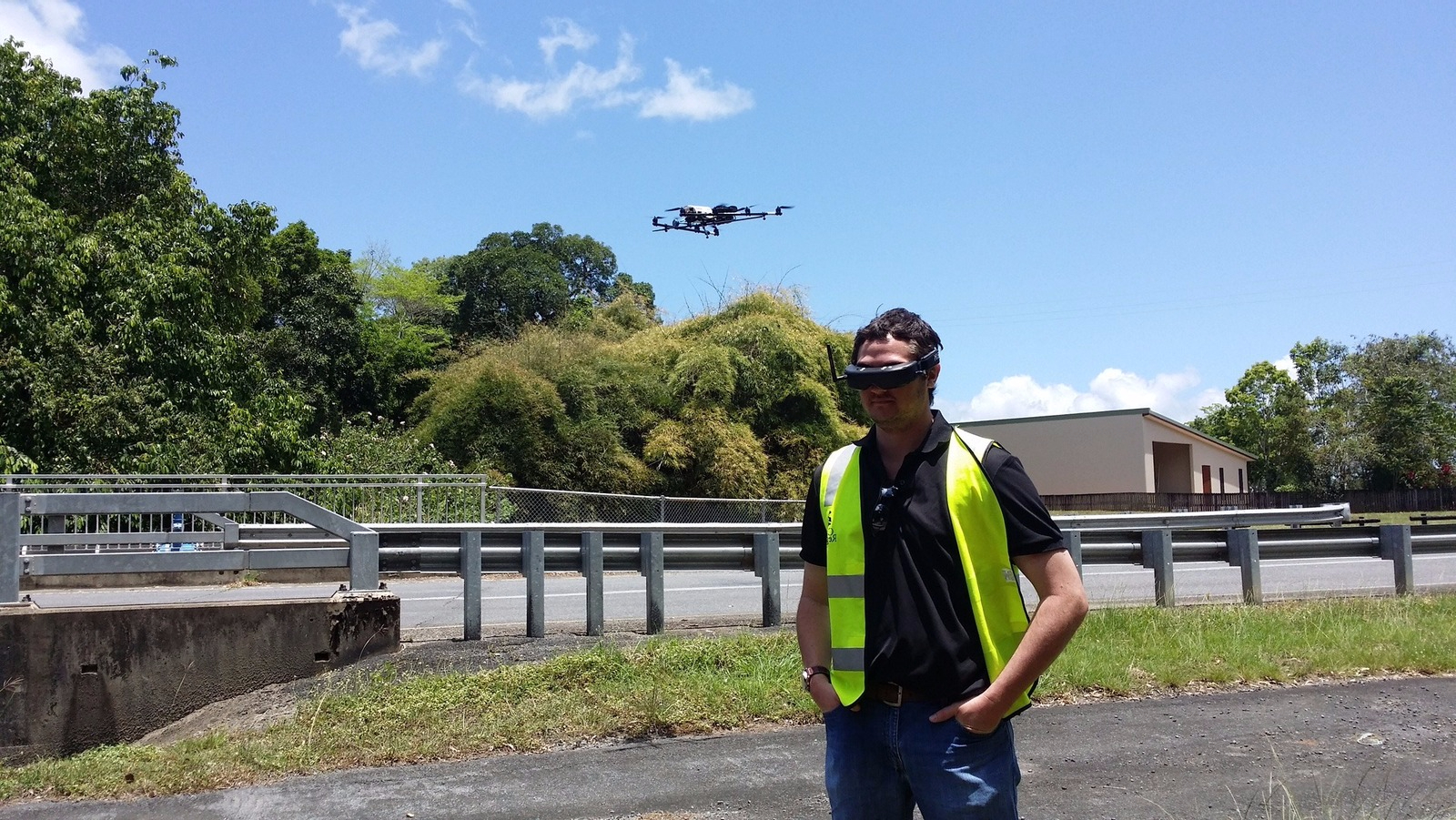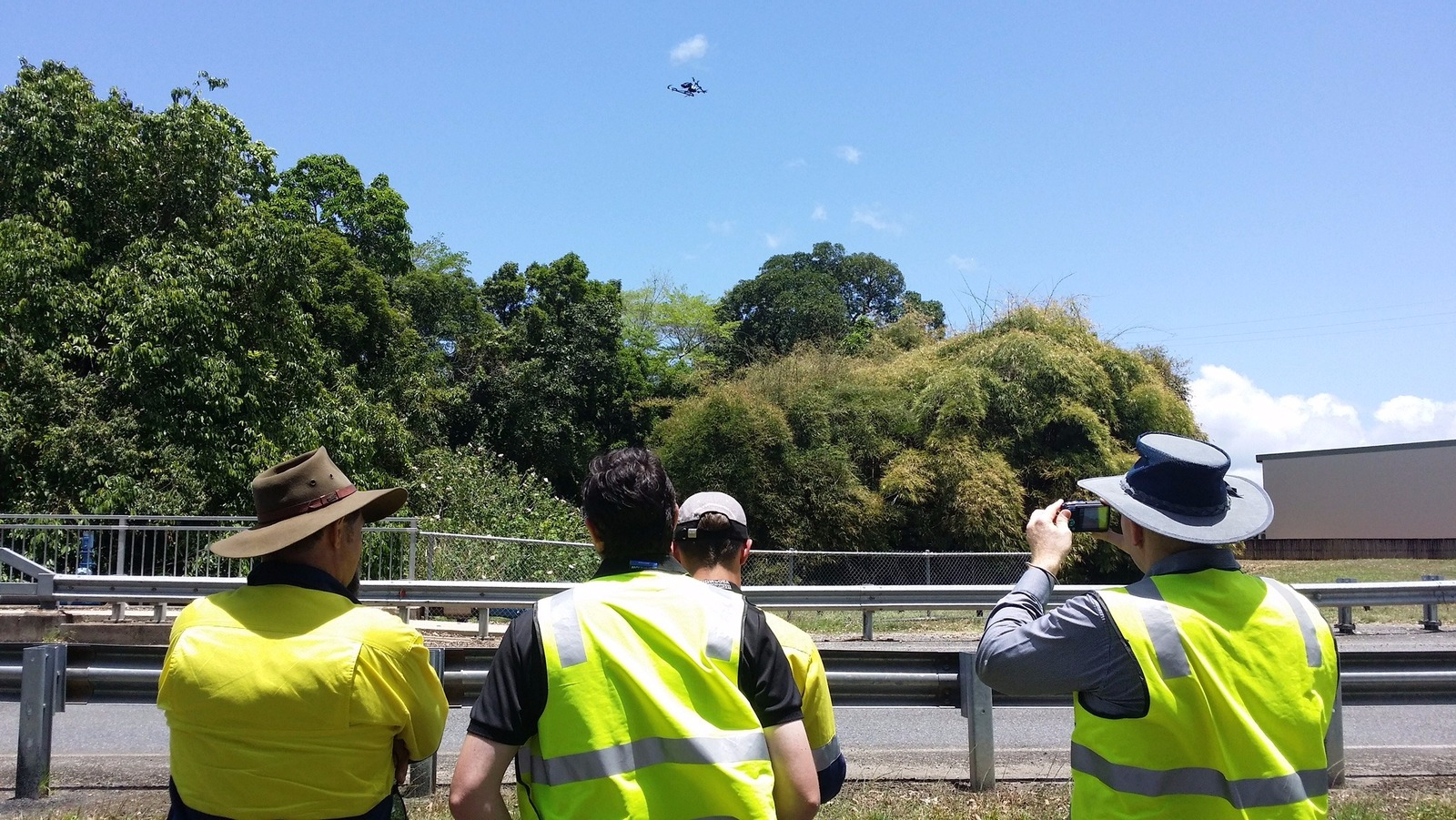Drones present clearly demonstrated benefits, opportunities to slash costs and will facilitate a new era in data-driven decision making for local government, a new study has found.
Queensland-based Local Government Infrastructure Services (LGIS) conducted a detailed study examining the technology, regulations, data capture and data management approaches to drones, also known as remotely piloted aircraft (RPA), within the state. The group also ran a number of trials themselves to corroborate the evidence they collected.

LGIS Director of Business Solutions, Clinton Parker, says the study focused on the benefits available to councils today. “We weren’t interested in what could happen or might happen,” Parker says. “Our aim was to ask, at a high-level, one question: how can this emerging technology cost-effectively assist councils with managing increasing operational demands?
“And the clear answer is yes, it can make a significant positive impact on local government business. We can see that it’s a platform for new data capture and from this will likely create a new era in data-driven decision making where timely, rich information and analytics transform the way we manage infrastructure.
“Also what we found was – despite a number of successful trials and clearly-demonstrated benefits and cost savings – few councils have successfully incorporated RPA use within their ongoing operations,” Parker continues.
Parker says the research showed while a lot of local governments had trialled RPA, very few have operationalised their use. The reasons for this are varied.
“In some cases they had a bad experience with an operator, which may have overstated their capability or perhaps botched the outputs, which some RPA operators forget is the most important part,” he says.
“In other instances there were barriers to working with the output data and incorporating this into operations. These examples mostly need a change-management solution more than anything.”
It also comes down to perceived risk: Parker says there needs to be a high-degree of confidence and a low-degree of risk for new technology to be widely-introduced into local government and the public works industry. “And this hasn’t been done very well yet,” he adds.
Not just a fad
Parker says there are some excellent examples and case studies that provide a high-level of confidence that RPA aren’t just a fad, but can be an essential tool for local governments.
“RPA have created an opportunity and most public works professionals I talk to have an amazing imagination for what these tools could do,” he says.
In public works, RPA are being used to undertake condition assessment for a variety of assets, such as bridges, buildings and water storage and treatment facilities, which can be difficult to access.
“This is growing beyond just difficult to access areas with automated defect detection software capabilities so that it has the potential to be the default condition assessment tool,” Parker says.
RPA can also assist with surveying, such as doing volumetric assessments or topographic mapping. They can also perform the tasks quickly.
“Importantly, they can operate in hazardous areas, such as developments where large civil works projects are underway,” Parker continues. “We have performed trials whereby the data capture took one hour and which might have taken a surveyor up to two days with numerous plant equipment, obstacles and various levels to navigate.
 “There are so many advantages such as reduction in workplace hazards, increased efficiency by reducing performance hours, increased accuracy and consistency in data capture, increased accessibility to assets and unique views and perspectives, increased productivity and in essence better value for money by the efficient allocation and targeting of resources, and increased quality, quantity and speed in which information is available to decision makers.”
“There are so many advantages such as reduction in workplace hazards, increased efficiency by reducing performance hours, increased accuracy and consistency in data capture, increased accessibility to assets and unique views and perspectives, increased productivity and in essence better value for money by the efficient allocation and targeting of resources, and increased quality, quantity and speed in which information is available to decision makers.”
However, Parker emphasises that RPA are just the vehicle for data capturing technology, which is rapidly developing.
“In some ways the RPA are not that important; what is essential, however, is the data capture tools and processing software. This is where the true innovation begins and ends.
“For example, using light detection and ranging (LIDAR) on RPA is expensive but only because the LIDAR units themselves are expensive. However, this cost is changing and as the cost falls and the technology improves so do the range of applications that we will use LIDAR for.”
“Imagine the range of sensors or combination of data capture approaches and software processing techniques that haven’t even been thought of yet. Unlike ever before, this will truly be the age of data driven decision making and RPA will play a significant role in capturing that data.”
Industry cowboys making hard for the rest
Some organisations that have trialled RPA have been burnt by providers who are over-promising and under-delivering.
“This is a significant issue, which good suppliers in the market acknowledge,” Parker says. “There are some providers overstating their capability and in many cases some making statements about their unique ability to, for example, fly beyond line of sight or at night. Some claim to have a unique set of algorithms in their software that can identify a range of things, but end up not being very effective at all.”
Parker says the risk can be mitigated by focusing on data outputs when compiling the scope of works.
“We can see that it could become an issue if the provider delivers a poor data outcome that is reasonable enough to pass a cursory check. So there needs to be some effort to check the data provided.”
A bad experience can damage the reputation of all suppliers in the RPA services industry, which in turn can stymie the market.
“When one council has a bad experience it is quickly communicated through networks and puts innovative professionals off,” Parker says. “It prevents councils from pushing the envelope. The job of the market is to work with councils to see how we can realise this technology and push the envelope, but there needs to be the baseline demand there to start with.”
What now?
Although LGIS encourages organisations to utilise RPA, Parker cautioned against rushing out to buy one.
“We’re suggesting that it’s a bit early in the evolution for purchasing and operating one internally,” he explains. “There are so many issues with operating a RPA service. There are issues of meeting CASA regulation (with some changes coming through this year), including having a licensed pilot for most craft.
There are risks of perception if things don’t go well, particularly if the pilot is not getting enough regular flight time, and there are issues in purchasing technological orphans that don’t meet ongoing needs. There is the significant expense, should councils wish to purchase the RPA, of getting the right data capture tools and software to meet council’s needs, particularly if they wish to meet the sheer range of applications across the depth and breadth of council operations such as pest management (weed and animal), compliance management, coastal management and more.

But most importantly, in my view, whilst RPAs are very easy to fly if your pilot is not flying it on a daily basis and capturing a range of data types regularly then leave it to the professionals. If one council makes a significant error in piloting RPAs then it is going to be difficult for the public works industry, and the community, to embrace the technology as quickly.
LGIS recommends that councils approach the introduction to RPA use as if they were introducing a new software system. “This is a data exercise and mistaking the RPA as the essential component overlooks that the data outputs are the key,” Parker says. He advises organisations to form an internal group including ICT managers, asset custodians and engineers, who can look at current processes that are required and what data needs to be captured, and analyse how an RPA may improve the data outcomes.
“Once they can define this they need to also ask about what to do with the data,” Parker says. “In many instances the data coming out of these applications is richer and heavier. What you do to both process the data into tangible outputs and then what you do with the ‘leftovers’ or remaining data should be an essential question. It is only after all of this is done then they could confidently go to the market, because the scope of works needs to be mostly focused on these questions and not the RPA unit.”
The Uber of RPA
After undertaking the research and speaking to councils, Parker says LGIS saw that the use of RPA in public works needed a champion to create confidence and stimulate demand.
LGIS is creating a ‘one stop shop’ for RPA services in Queensland. Interested parties can look at a menu list of services and place a booking. “They will be getting a low-risk, affordable and high quality RPA service,” Parker says.
“LGIS won’t own RPA, but will work with the market to provide tailored best practice services. We will create specifications, set standards on outputs and outcomes, provide quality assurance, manage risks, and aggregate the market to drive cost efficiencies. Most importantly, the service will include support to operationalise the data outputs, help with managing stakeholders, including the community, and support with data management and storage if needed.”
For more information on this service, email Carrie Hillier at chillier@lgis.com.au or call 07 3857 6506.